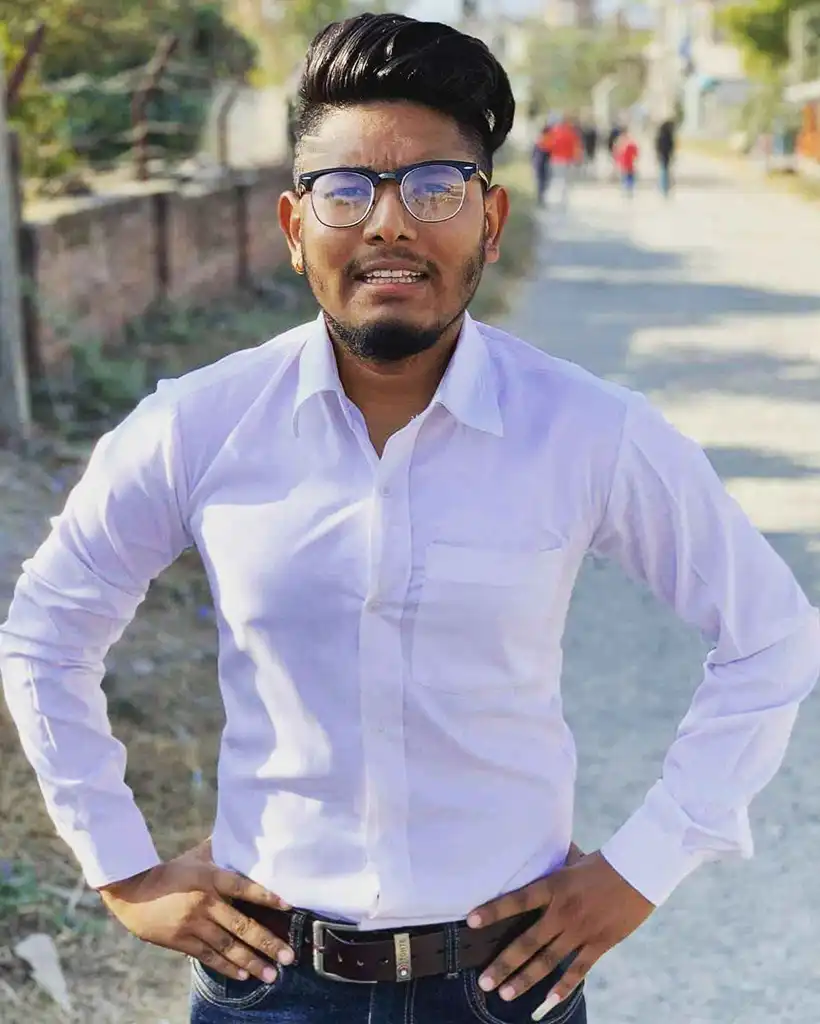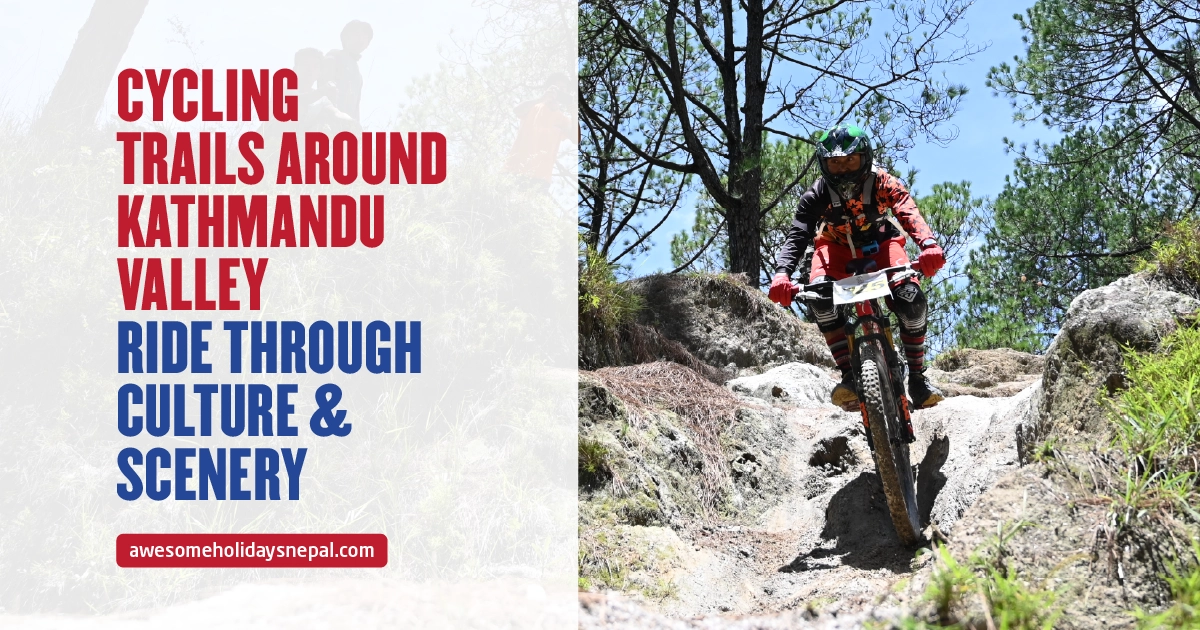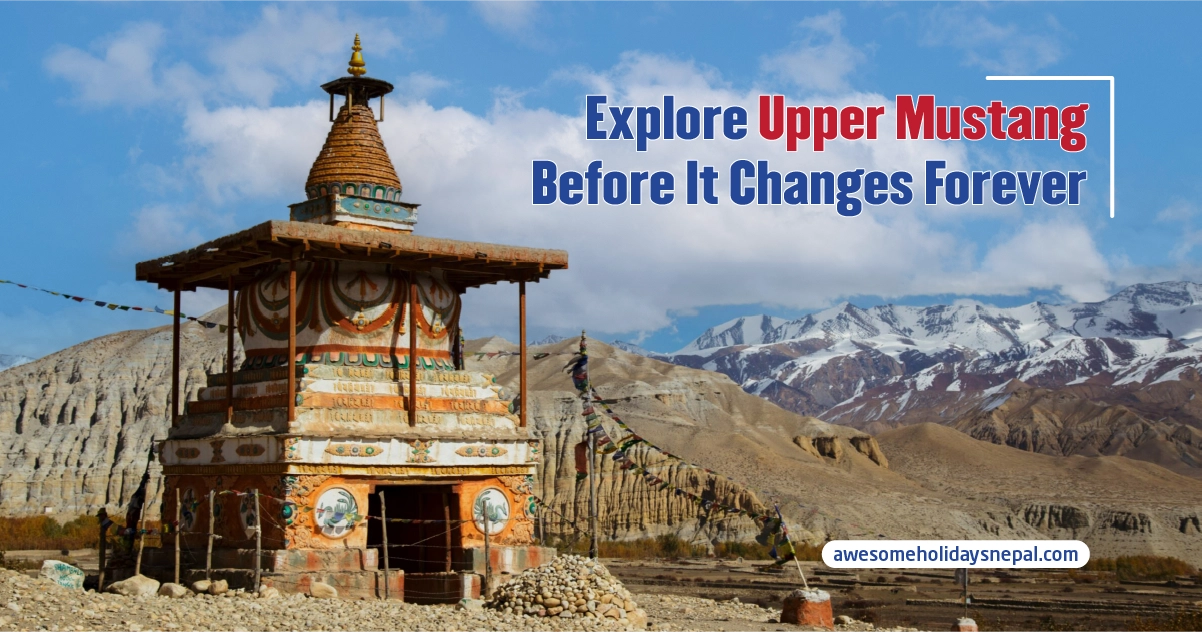Rato Machindranath Jatra
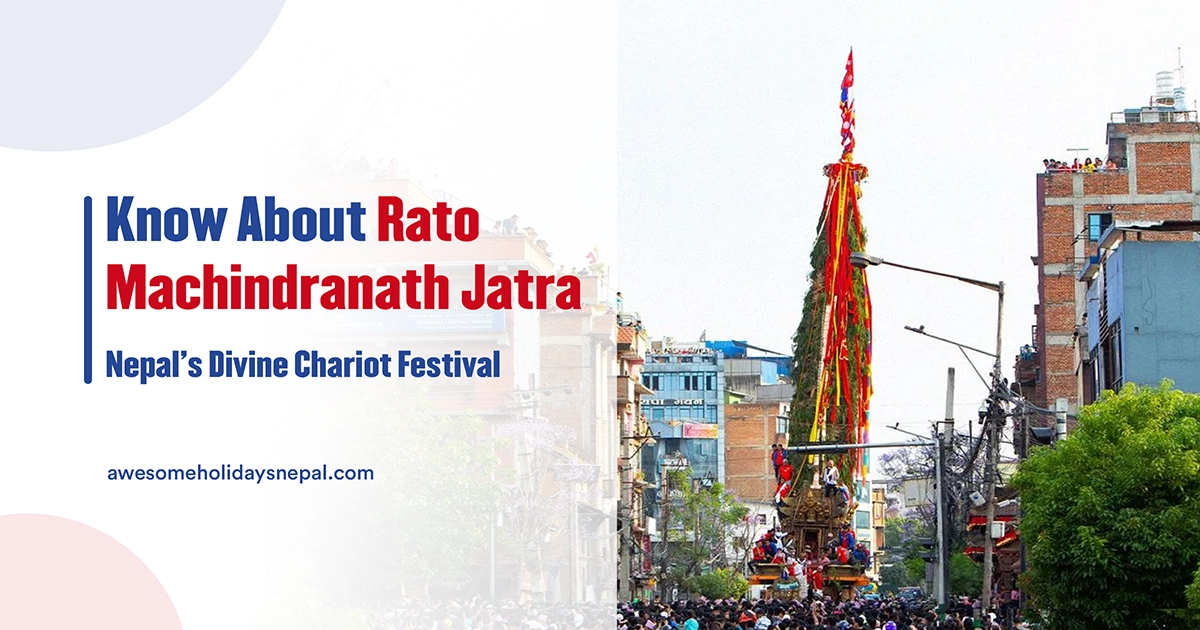
Among the Newars, Rato Machindranath, or Bunga Dyah, is one of Nepal’s oldest and most respected gods. Regarded as the Rain God, this merciful figure has a one-of-a-kind position in the religions of Buddhism and Hinduism.
Every year, the valley of Kathmandu—particularly the ancient city of Patan—erupts into color, music, and communal spirit during the Rato Machindranath Jatra, a chariot festival believed to usher in the monsoon rains and ensure agricultural prosperity.
Bisket Jatra: A Vibrant Celebration of Tradition and Culture in Bhaktapur
Rato Machindranath Jatra: Everything You Need to Know
The Deity of Compassion and Rain
Buṅga Dyaḥ, also known as Karunamaya (which means “the compassionate one”), a regional version of Avalokiteśvara—Mahayana Buddhism’s Bodhisattva of Compassion—is at the core of the festival. Hindus refer to him as Machhindranath, a notable yogi and saint. The merger of Hindu and Buddhist characteristics in the deity elegantly mirrors the religious syncretism of the Kathmandu Valley.
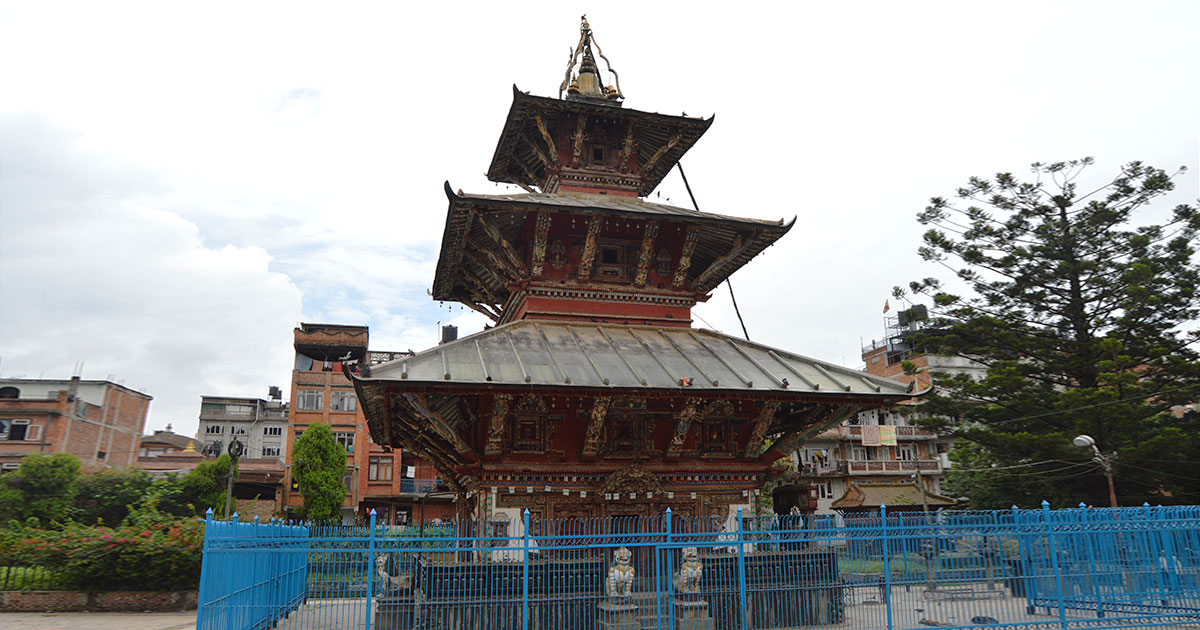
Known for the deep red color of his idol, the deity is Rato Machindranath, or the “Red Machindranath.” People believe that he will protect the valley from famine and drought and bring timely monsoons and riches. This large public ceremony has been used for centuries by the people of Patan and its surroundings to honor his spiritual presence and abilities.
A Festival Born from Drought and Deliverance
Legend has it that the Kathmandu Valley once had a terrible drought that went on for a long time. Along with a tantric master and a Newar priest, reigning 640-683 AD, King Narendra Deva traveled to Assam to escort Machhindranath the rain god back to Nepal.
Upon his arrival, the yogi Gorakhnath then unleashed the serpentine gods in charge of precipitation from imprisonment, so finally rain fell upon the ground. A chariot procession honored the deity’s arrival—thereby initiating a custom that has lasted for over a thousand years.
The Mighty Chariot Procession
The preparation for the festival commences weeks ahead in Pulchowk as the 60-foot wooden chariot is constructed using age-old methods free of nails. After that Rato Machindranath’s image is set in the chariot from his Tabahal temple, and the magnificent parade starts.
The chariot is drawn manually on the patan streets, a slow and holy trip that covers several weeks. Starting from Jawalakhel, the procession route goes through Pulchowk, Gabahal, Mangal Bazar, Hakha, Sundhara, Chakrabahil, Lagankhel, and finally ends at Jawalakhel. Beside the main chariot, there’s also a second chariot for Chākuwā Dyah, his partner god.
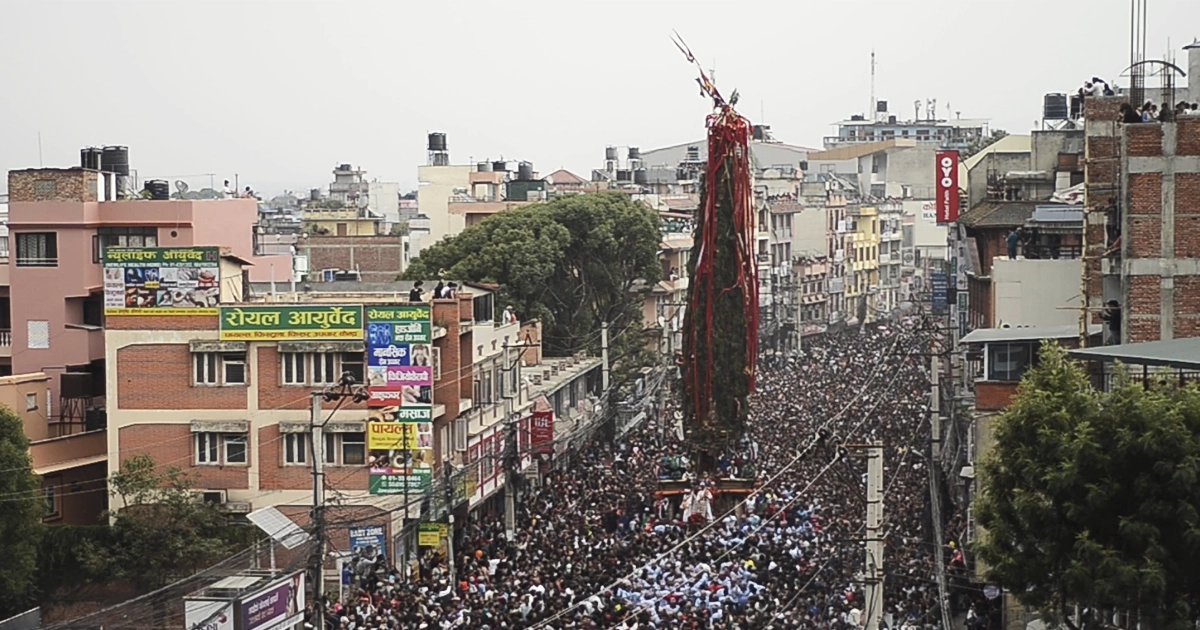
One of the most famous scenes takes place between the localities of Iti and Thati, where, according to custom, only ladies can pull the chariot. Yākah Misāyā Bhujyā, a potent representation of female power and involvement in ritual life, marks this section of the procession.
Bhoto Jatra – The Festival of the Vest
Rato Machindranath Jatra reaches its crescendo with the Bhoto Jatra, an impressive event that takes place at the open field of Jawalakhel. A sacred jewel-studded vest (bhoto) is shown from the chariot in all four directions before a great audience including senior officials and even the President of Nepal in this magnificent closing.
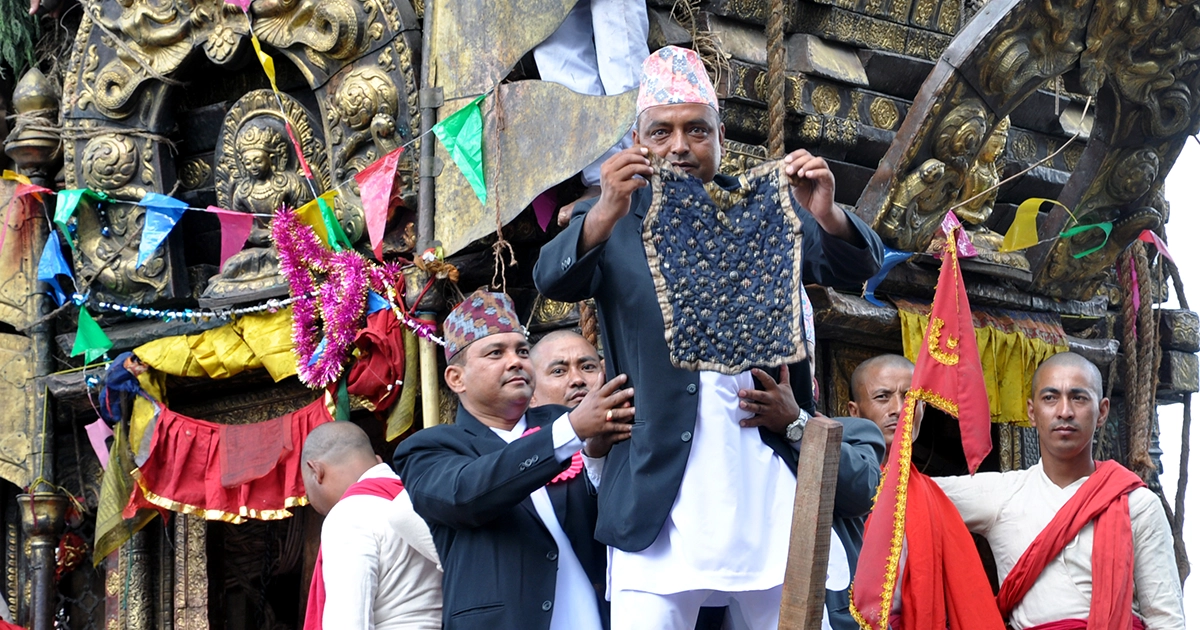
According to centuries-old folklore, a farmer lent his bejeweled vest to a snake god and later declined to return it. A conflict broke out between them, and the vest was handed to Rato Machindranath after the issue could not be settled. Since then, it is shown to the public each year representing divine care, truth, and justice.
Similarly, if you want to know about the Top 10 Festivals of Nepal, you can read our blog.
Barha Barsa Jatra – The 12-Year Pilgrimage Procession
Once every twelve years, a unique version of the celebration, known as the Barha Barsa Jatra, takes place. At Bungamati, the ancient village regarded as the deity’s original abode, the great chariot is erected not in Patan but during this time. The chariot is pulled all the way to Patan—quite a holy trip through Bhaisepati, Nakkhu, Bhanimandal, Jhamsikhel, and finally Pulchowk—from there. The evening march down Jhamsikhel is particularly intense and emotionally fraught.
The Bungmati idol of Rato Machindranath is taken home for six months after the traditional city route and the Bhoto Jatra, then it goes back to Patan the next year.
Two Homes, One Deity
Rato Machindranath is one of the few gods in Nepal to have two residences. Bungamati, a lovely Newar settlement surrounded by fields and old customs, calls half of the year home. Half the time is passed at Patan, where he lives in a Tabahal temple.
Especially during the beginning and end of the festival, the trip from these two sites is inherently holy and carried out with ceremony and respect.
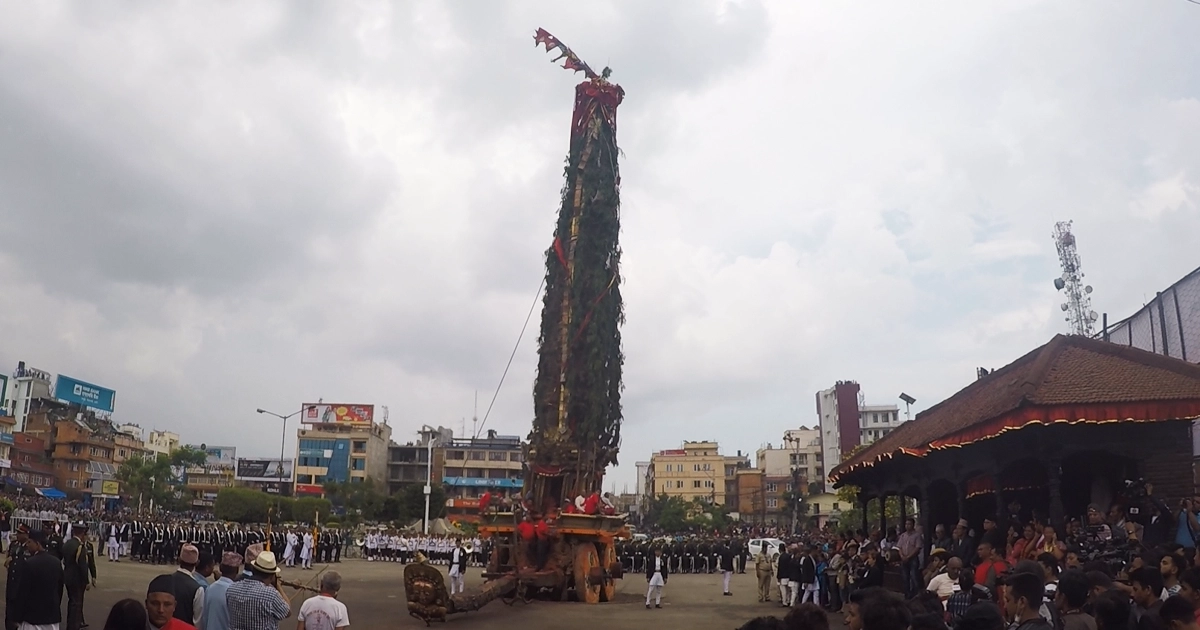
Even outside festival days, visitors to Bungamati can still sense the god in the small streets, the ancient temples, and the modest offerings left by the villagers.
Why You Should Experience Rato Machindranath Jatra
When you are travelling in Nepal during the month of April through June, then it is a must to visit the Rato Machindranath Jatra. Far from just a religious occasion, it is a profound cultural experience that exposes you to the living customs of the Newar people, the art of chariot-building, and the emotional intensity of faith in motion. As thousands of people pull ropes, cheer together, and pilot the towering chariot down narrow medieval lanes, you will observe teamwork like nowhere else.
From women in red saris pulling ropes to little boys scrambling on the chariot’s rails, photographers will adore the vivid scenes. Every twist is rich in mythology, history, and ceremony—a gift for the seeker of culture. And in the way the event connects Buddhists, Hindus, young and elderly, city residents and rural folk, spiritually inquisitive travelers will discover great significance.
Top 10 Things to Do in Kathmandu: Exploring All from Heritage to History
When and Where to Go
The festival begins in April or May (Baisakh) and lasts into June, depending on the lunar calendar. The best places to witness the festivities are:
- Patan Durbar Square – to see the chariot construction and early rituals.
- Gabahal, Sundhara, Lagankhel – for closer views of the procession.
- Jawalakhel – for the dramatic conclusion during Bhoto Jatra.
- Bungmati – for off-the-beaten-path cultural experiences before or after the main festival.
Bring comfortable shoes, sun protection, water, and an open mind—you’re in for a cultural deep dive.
Celebration More Than Just a Festival
More than just a festival, the Rato Machindranath Jatra is a living icon of the resilience, variety, and piety of Nepal. It honors water, optimism, and the common heritage of a valley that has flourished on culture for thousands of years.
You come to see you are seeing more than just a ceremony but rather the throbbing pulse of the Kathmandu Valley when the chariot creaks through old streets and the deity’s presence blesses the masses. The Rato Machindranath Jatra is an experience that will stay with you long after the chariot has stopped and the streets have fallen silent once more.
Whether you are a cultural explorer, a history buff, or a curious wanderer, your experience will be quite remarkable!
Related blog posts
Discover a choice of tourist destinations loved by most of our visitors. Whether you're on a jungle safari to spot rare animals or walking through a world heritage site, these well-planned itineraries cover the major highlights of Nepal.

